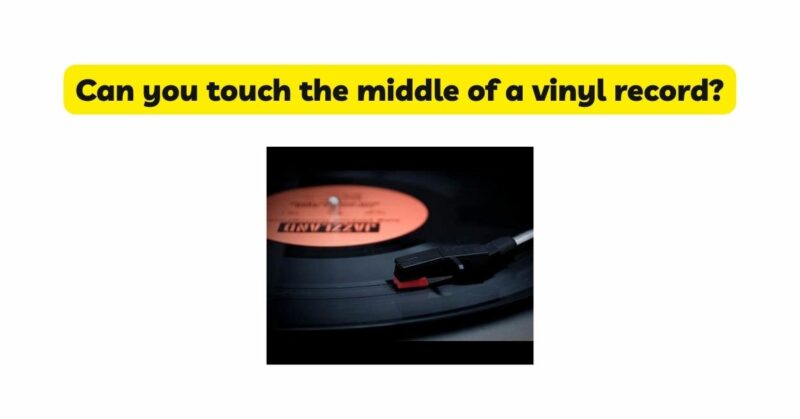Vinyl records have captivated music enthusiasts with their warm sound and tactile appeal. However, one contentious topic within the vinyl community is whether it is acceptable to touch the middle of a vinyl record. In this article, we will delve into the reasons behind the debate and explore the potential effects of touching the middle of a vinyl record. By understanding the structure of vinyl records, the impact of oils and debris, and proper handling techniques, we can strike a balance between the desire to interact with vinyl records and preserving their integrity.
I. The Structure of Vinyl Records
- Anatomy of a Vinyl Record: Vinyl records consist of a central label area, concentric grooves, and a lead-in and lead-out section. The middle of the record, where the label is located, is often considered a sensitive area.
- Function of the Middle Section: The middle section provides stability and balance to the record during playback, ensuring consistent rotation and tracking by the turntable’s stylus.
II. Understanding the Risks
- Oils and Debris: Our hands naturally produce oils, which can transfer to the vinyl record and potentially affect sound quality. Dust and debris present on our fingertips can also contribute to surface contamination.
- Damage to the Label: The label in the middle of the record contains crucial information about the release. Excessive handling or improper gripping can lead to smudging, peeling, or damage to the label.
- Potential Warping: Mishandling the record in the middle, such as applying pressure or bending, can lead to warping. Warped records result in playback issues and compromised sound quality.
III. Proper Handling Techniques
- Touching the Edges: To minimize the risk of damage, it is generally recommended to handle vinyl records by the edges. This avoids contact with the sensitive middle section and reduces the chances of transferring oils and debris to the playing surface.
- Finger Placement: When handling the record, placing fingers lightly on the outer grooves while avoiding contact with the label area helps maintain stability and balance.
- Using Record Jackets and Sleeves: Protective jackets and inner sleeves provide a layer of defense against physical contact and environmental factors. They shield the record and label from direct touch and help reduce the accumulation of dust and debris.
- Cleaning and Maintenance: Regular cleaning of vinyl records using appropriate cleaning solutions and tools helps maintain their condition and sound quality. This practice removes dirt, oils, and contaminants that may have accumulated over time.
IV. Balancing Interaction and Preservation
- Limited Touching: While it is generally advisable to minimize touching the middle section of a vinyl record, occasional interaction may be necessary for purposes like flipping the record or changing sides. In such cases, it is important to exercise caution and follow proper handling techniques.
- Technological Alternatives: Technological advancements, such as digital music platforms and streaming services, offer convenient alternatives to physical vinyl records. These platforms provide an opportunity to interact with music without the need for direct physical contact.
- Display and Collecting: Displaying vinyl records in protective frames or stands allows for visual appreciation without the need for excessive handling. Collectors can enjoy their vinyl collection visually while preserving the records’ integrity.
Conclusion
While the debate on touching the middle of a vinyl record continues, it is important to strike a balance between interacting with vinyl records and preserving their longevity. By adopting proper handling techniques, using protective jackets and sleeves, and incorporating technology alternatives, vinyl enthusiasts can maintain the integrity of their records while still engaging with the music they love. Ultimately, the goal is to find a middle ground that allows for enjoyment, appreciation, and the long-term preservation of vinyl records as cherished artifacts of musical history.


